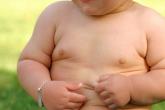Overweight determine excess of body fat, running out of adopted norms and leading in effect to body weight increase, while obesity is pathological accumulation of body fat in the organism, exceeding its physiological needs and adaptability, which may lead to the adverse for health effects.
Since many years the most popular way of describing overweight and obesity is BMI index (Body Mass Index). For obesity is considered if when the fat is more than 20% of total body weight in case of men and 25% in case of woman. For overweight BMI is between 25 and 29,9, when it comes to obesity BMI equals 30 or more. BMI value doesn?t reflects so well the organism fat content when it comes to athletes or muscular people (specific weight of muscles is higher that fat tissue). BMI value isn?t also adequate for describing the body fat of breastfeeding and pregnant woman as well as undernourished persons with fragile body structure. BMI is calculated as the ratio of persons weight (kg) to height (m) squared.
|
|
|
BMI values interpretation
? 18,5 - 24,9 - correct
? 25,0 - 29,9 - overweight
? 30,0 - 34,9 - 1st degree obesity
? 35,0 - 39,9 - 2nd degree obesity
? > 40,0 - 3rd degree obesity (morbid obesity)
The other index helpful to provide obesity is measuring the ideal and relative body weight. The calculation of two mentioned indexes can be made in following way:
Ideal Body Weight = {height [cm] ? 100} ? 10% (for men 5%)
Relative Body Weight = {current weight [kg] ÷ ideal body weight [kg]} x 100%
Obtained result is interpreted in following manner:
? 90 - 109,9% - proper value
? 110 - 119,9% - overweight
? 120 - 139,9% - obesity
? > 140% - morbid obesity
The most visible sign of overweight and obesity is the accumulation of fat tissue. Fat tissue is a set of cells fulfilled with fat. It also contains a significant amount of water. It?s like a soft, fluffy pillow, fulfilling various body cavities, e.g. space between the group of muscles or between internal organs of abdominal cavity and chest. Fat tissue fulfill also space between the skin and deeper lying tissues, thanks to this it is also protecting tissue, absorbing compressions and injuries. It is also the energetic storehouse of the system, from which organism can take an energy in nutrition deficiencies periods. Obesity doesn?t appear rapidly. It is the consequence of systematically progressing overweight.
Types of obesity
We can divide two types of obesity referring to the fat tissue localization:
? Abdominal obesity, android or central obesity. It is characterized by the accumulation of large amount of fat tissue in abdominal cavity. It concerns rather men, threatens to ischaemic heart disease.
? Gluteal-femoral obesity, gynoid. It is characterized by the accumulation of large amount of fat tissue around the thighs and buttocks. Occurs rather in women.
We also distinguish two types of obesity referring to etiology of the obesity:
? Primary obesity, otherwise dietary, arising on interaction of genetic and environmental factors. The cause of this obesity is improper lifestyle, that is fast consumption, lack of physical activity, consuming of high-calorie meals or improper culture of eating, which causes energetic balance disorder, which leads to fat tissue accumulation.
? Secondary obesity. This is pathological obesity. It is a result of hormonal, nervous system disorders, genetic defects or chronic treatment.
Causes of obesity
Excessive body weight is mostly caused (90%) by advantageous energetic balance, that is consumption of too large amount of food.
Causes of primary obesity:
- Genetic factors. Nutritional habits of the family plays very important role. Genetic factors can determine even 40% of causes leading to obesity. In that process few genes influencing on food intake and energy expenditure may be engaged. The exact mechanism still stays unknown. It is suspected that the brain of obese person receives erroneous information decreasing the fat resources in the system.
- Physiological factors. The frequency of obesity occurrence increases with the age, yielding only a reduction in old age. Nutrition of human is regulated by central nervous system in particular by hypothalamic center, olfactory bulb, limbic system, reticular creation, amygdala and cerebral cortex. These centers receives all the time mental, nervous, hormonal, metabolic incentives informing about the nutritional status of the tissues. These centers after analyze, shapes the feeling of starve, appetite, satiety etc. Appetite is regulated by the size of the meals, its frequency, contain, taste and function. Hunger is characterized mainly by neurotransmitters, especially monoamines : serotonin - reduce appetite for carbohydrates, dopamine - regulates hunger by slowing down the fat intake, noradrenaline - increases appetite for carbohydrates.
- Lifestyle. Obesity is caused especially as a result of too high fat intake and too low physical activity. Reduced physical activity in affluent societies an important factor causing obesity. Although food consumption increases with the rising energetic expenditure, it doesn?t reduce proportionally, while physical activity gets below a certain level. In some people reduction of physical activity may even cause increase of food consumption. Women leading a sedentary lifestyle are seven times (men are four times) more endangered by weight gain. Stimulants also have a big influence on obesity development. Alcohol consumpted in excess provides empty calories and causes weight gain. Smoking cigarettes reduce appetite, although it can?t be a method for keeping up fit, as it is one of major cardiovascular system diseases cause. People, who quit smoking often gain weight in a result of intensified appetite, which compensates the lack of nicotine.
- Psychological factors. Obesity is treated as a addiction, compulsions of eating negatively affects on life and makes obese persons avoiding contact with other people, they?re afraid of rejection, often feel worse than others. Obesity in this case can become a way of life, an excuse for all personal failures, consumption can become a method for anger, sadness rebound, boredom. Delusive hope that everything?s going to be alright if they manage to loose weight is typical for obese persons.
Causes of secondary obesity:
- central nervous system disorders : cranial trauma, brain tumors, adiposogenital Froehlich?s dystrophy, Blount syndrome
- endocrinopathy : hypothyroidism, primary hyperinsulinemia, Cushing disease or syndrome, Stein-Leventhal syndrome, condition after removal of the ovaries, growth hormone deficiency, climacteric syndrome, hypogonadotropic hypogonadism and others.
- medicines intake : glucocorticoids, estrogene, progesterone, sedatives, phenothiazines.
- chromosomal defects : Turner?s syndrome, Down?s syndrome.
The risk of diseases and illness related with obesity
- Type 2 diabetes - 90% of diabetes cases, 80-90% of patients are obese persons. Even 5-10% weight loose leads to reduction of blood sugar level and helps to decrease doses of antidiabetic drugs, including insulin.
- Hypertension - 20% weight gain causes eightfold increase in the prevalence of hypertension.
- Hyperlipidemia - increased level of cholesterol and triglycerides in blood. Besides the total level of cholesterol which is important for the risk of heart disease there is also relation between ?good? ? HDL cholesterol and ?bad?- LDL cholesterol. This ratio is unfavorable in obese persons.
- Brain stroke - the risk of occurrence in obese persons is double times bigger.
- Heart failure - the risk of this disease is 1,9 times higher in obese persons.
- Coronary artery disease - 40% of this disease cases is related to over 25 BMI value. The probability that obese person will have coronary artery disease is 1,5 times higher than in persons with proper weight. Obesity also worsens the infarction rehabilitation process.
- Cholelithiasis - the gall bladder diseases occur six times more than in slim persons.
- Degenerative changes in joints - subjected to excessive pressure joints are damaged faster, which causes pain syndromes , e.g. spine, knees.
- Tumors - in obese persons the uterine, nipple, gall bladder, large intestine, prostate tumors occurs more often than in slim persons.
- Breath disorders while sleeping - manifested, among others hypoventilation syndrome or sleep apnea.
- Varicose veins of lower limbs - in obese person circumstances of blood flow from lower limbs is worse. It leads to excessive blood filling veins and as a consequence varicose veins formation.
- Hormonal disorders and pregnancy complications - more often occurs in obese women.



















